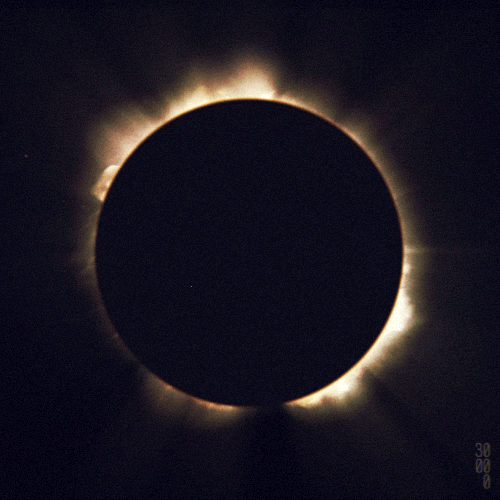Eclipses: Playing in the Shadows
•Posted on August 31 2018

For both Solar and Lunar Eclipses, shadows play an important role: either the Moon projects her shadow onto the Earth (Solar Eclipse) or the Moon moves into Earth’s shadow (Lunar Eclipse). What we usually don’t see now takes center stage, be it a new perspective, an unexpected turn of events or a side of ourselves that we’ve refused to see. Usually happening four times every year, eclipses are a time of upheaval, change and turning points in our lives.
Eclipses happen when the Sun and Moon form either a conjunction (Solar Eclipse) or an opposition (Lunar Eclipse) at a distance of 19 degrees from the South or the North Node.

Linked to the soli-lunar cycle, these cosmic events unite the energy of consciousness and decision (the Sun) with the energy of subconscious patterns and memory (the Moon), marking moments when our usual framework of reality, the one we take for granted day by day, can be shaken into awareness and change.
An Eclipse can be total if the distance is between 0 and 4 degrees (Lunar Eclipses) or between 0 and 9 degrees (Solar Eclipses) and partial if the orb is not so tight. Of course, a total eclipse is more powerful, but the partial ones aren’t insignificant either! Another factor that influences their intensity is their duration: the longer an eclipse lasts, the more significant the effects.
Eclipses usually come in pairs: one a solar eclipse of a certain kind (South Node or North Node) and the other a lunar eclipse of the opposite kind, at a 2-week distance. About every 6 months, we’re faced with a critical point: letting go of the old (South Node Eclipses) and embracing the new (North Node Eclipses).
Solar Eclipses
When the Moon is exactly between the Earth and the Sun, she blocks sunlight from reaching our planet. This is the Solar Eclipse that happens when the Sun conjuncts the Moon (New Moon) within 19 degrees of either the North Node or the South Node. Depending on whether it’s a partial or a total eclipse, the Sun can be completely or just a little “shut off” from the sky. Even though a total eclipse is stronger, changes can be noticed in both cases, usually in the form of external events that shake up our routines and perceptions.
A North Node Solar Eclipse brings expansion, opening up the gates for a new phase in our lives, perhaps through events that seem “fated” to lead us forward. A South Node Solar Eclipse can bring the same idea of “fatedness”, but in the sense of having to detach ourselves from something that no longer serves us so we can step into a new phase with less baggage and with more ease.
This is the start of a new cycle when the “known” takes a break and the Universe gives us a little push forward to bring us closer to our true selves. How comfortable this push will depend on how much we’ve managed to break free from old patterns…
Lunar Eclipses
When the Earth is exactly between the Sun and the Moon, Luna is dwelling in our planet’s shadow. This is the Lunar Eclipse that happens when the Sun opposes the Moon (Full Moon) within 19 degrees of either North Node or the South Node. The issues precipitated by the Lunar Eclipse are more internal than external. Emotions intensify more than on the usual Full Moon and our shadow selves rise to the surface, less inhibited than ever by the grip of our egos. There can be shifts in the way we see emotions and in our manner of relating to others as one more cycle comes to an end and the unconscious drives that have been fuelling our actions are brought to light.
A North Node Lunar Eclipse can give us a push forward when it comes to our internal world, opening a new perspective, a new range of feelings while we assess the end of a cycle in our lives. A South Node Lunar Eclipse is a perfect time for closure as past issues round-up and we’re supported to let go of things that no longer serve us. Just like a super Full Moon, a Lunar Eclipse is a time when we’re confronted with the results of our past and pushed a step further towards change.
Comments
0 Comments
Leave a Comment